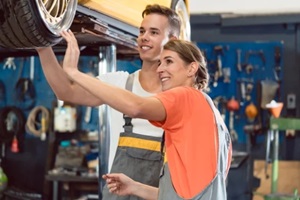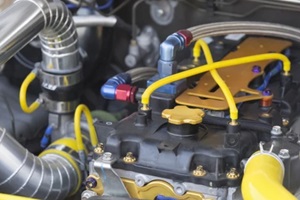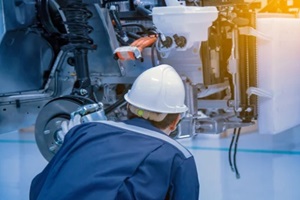 A custom auto shop offers customers a unique design process that transforms the clients’ visions into tangible masterpieces that stand as true works of automotive art.
A custom auto shop offers customers a unique design process that transforms the clients’ visions into tangible masterpieces that stand as true works of automotive art.
In today’s post, we will explore this complex process and showcase precisely how design teams work diligently to help bring a client’s dreams and unique vision to life and make it a drivable reality.
Crafting the Client’s Vision in a Custom Auto Shop
In the automotive design process, the journey begins with the initial client consultation, which is an important phase where all of the client’s ideas, preferences, and requirements are discussed in greater detail. Clients come into a shop with all kinds of ideas, dreams, and desires, ranging from reviving a classic car to infusing a modern vehicle with unique characteristics.
During these sessions, the client’s vision is meticulously dissected, considering and carefully balancing aesthetic preferences and functional requirements. Custom auto shops often employ designers and consultants who are adept at translating client desires into feasible design concepts.
During the consultation, they discuss aspects such as the car’s intended use, whether for shows, daily driving, or as a collectible. The client’s budget is another important component of shaping the project’s scope. This collaborative consultation helps ensure that the vehicle aligns perfectly with the client’s visions and the shop’s capabilities.
Bringing Concepts to Life
Once the initial consultation is complete, the design team transitions to the concept development phase. Here, the artistry and technical expertise of the team really shine and come to the forefront.
Designers utilize sketches, 3D models, and sometimes even virtual reality to bring the client’s vision to life. This stage involves things such as choosing materials, colors, and textures, as well as determining the mechanical upgrades necessary to meet performance goals.
The design and build teams carefully work hand-in-hand to ensure that all of the aesthetic changes made will not impede the vehicle’s functionality. For instance, if a client wants a wider body kit for their sports car, the team must consider the impact on aerodynamics and handling.
The team might use software to simulate these changes to help provide a clearer picture of the final idea they’re trying to build. This phase in the overall design process is highly iterative, with constant client feedback directly shaping the design to its final form.
Executing the Vision with Precision and Craftsmanship
 With the design finalized, the project moves into the hands of skilled craftsmen and technicians, where the true transformation occurs. Custom auto shops boast a range of specialists, from metalworkers and painters to upholsterers and mechanics, and all of them play key roles in bringing the idea to life.
With the design finalized, the project moves into the hands of skilled craftsmen and technicians, where the true transformation occurs. Custom auto shops boast a range of specialists, from metalworkers and painters to upholsterers and mechanics, and all of them play key roles in bringing the idea to life.
Each aspect of the modification requires precision and attention to detail. For instance, fabricators may work on customizing body parts, while interior designers focus on ergonomics and aesthetics inside the vehicle.
For body modifications, metalworkers might fabricate panels from scratch or modify existing ones, employing techniques such as welding, shaping, and smoothing to achieve the desired contours.
The paint job, often a focal point in custom cars, requires layers of priming, painting, and clear coating to achieve a flawless finish. Paint specialists choose colors and textures that match the client’s preferences and enhance the vehicle’s appearance.
Throughout this phase, the team works diligently to ensure that every modification adds to the vehicle’s visual appeal while enhancing its performance and functionality.
Color matching and custom graphics are also integral to this stage. In terms of mechanical upgrades, technicians may overhaul engines, upgrade suspension systems, or install high-performance brakes. This phase’s precision and attention to detail are absolutely vital as they directly impact the vehicle’s aesthetics and performance.
Providing Clients With Their Dream Vehicles
The final phase in the auto design process at custom auto shops is going through a thorough quality check and then having the ultimate reveal with the client.
Quality control in custom auto shops is rigorous, with every aspect of the vehicle inspected to ensure it meets the shop’s standards and the client’s expectations. This process includes checking the fit and finish of body panels, the performance of mechanical upgrades, and the overall look and feel of the vehicle’s interior — if it was modified.
Once the vehicle passes these key inspections, it’s time for the client to see their dream finally transformed into reality. This grand reveal is often an emotional moment for them, marking the culmination of creativity, expertise, and collaboration.
Remember: the client’s first drive isn’t simply a test of the vehicle’s performance — it’s a celebration of the artistry and precision that have come together to create something unique that’s truly one of a kind.
Trust Rob’s Customs for Your Custom Auto Shop Body and Restoration Needs
 The design process in custom auto shops is a blend of art and engineering — a testament to the skill and passion of those who dedicate their careers to transforming automotive dreams into tangible, awe-inspiring realities.
The design process in custom auto shops is a blend of art and engineering — a testament to the skill and passion of those who dedicate their careers to transforming automotive dreams into tangible, awe-inspiring realities.
Each project is a unique journey of its own that actively reflects every client’s unique personality and desires. These visions are realized and brought to life through the talent and dedication of the design and build teams.
Rob’s Customs and Restorations stands well above the competition in Northern Virginia and beyond. Their unmatched and deep dedication to quality and expertise in engine swaps, classic car restorations, and custom paint work make them the perfect partner for your unique automotive needs.
For personalized guidance and expert advice, schedule a free consultation with Rob’s Customs today. You can reach them at 1-(703)-552-5001 or visit their shop at 9128 Euclid Ct, Manassas, VA 20110, to start transforming your vehicle into a true work of automotive art.
